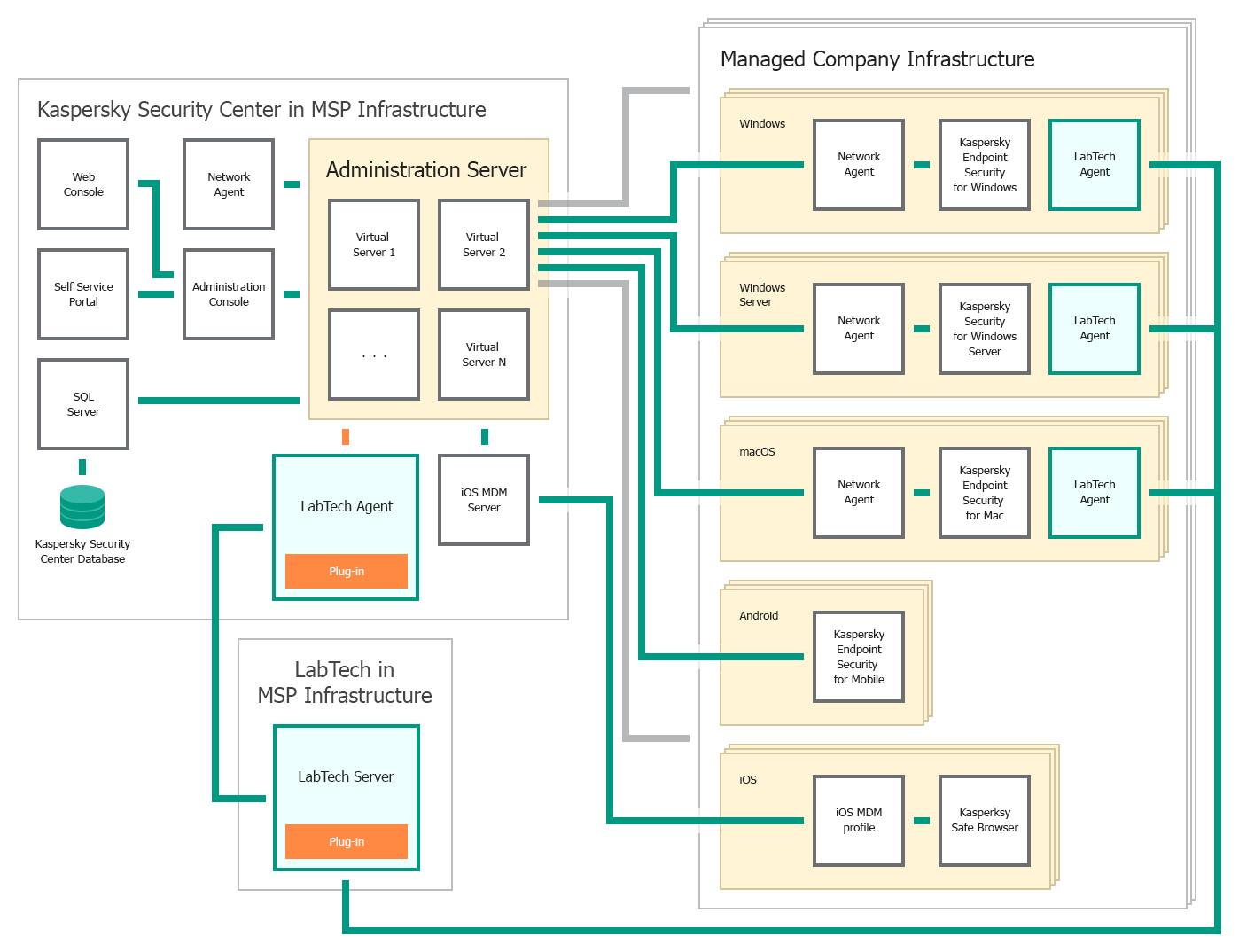Deployment schema for on-premises solution
Deploy Kaspersky Security Plug-in for ConnectWise Automate based on this schema if you use an on-premises version of a Kaspersky solution—Kaspersky Security Center—and if you do not have slave Administration Servers in your managed company infrastructure.
The components of Kaspersky Security Plug-in for ConnectWise Automate are shown as orange rectangles in the following figure.

Deployment schema for on-premises solution
The following list describes deployment sequence and data flow:
- First, Kaspersky Security Plug-in for ConnectWise Automate is installed on the computer where ConnectWise Automate Server is installed.
- Then the computers managed by ConnectWise Automate, and with Kaspersky Security Center Administration Server installed, are detected and Kaspersky Security Plug-in for ConnectWise Automate is installed on those computers.
- ConnectWise Automate Server exchanges data with the computers that have ConnectWise Automate Agents installed.
- Kaspersky Security Center Administration Server exchanges data with client computers that have Kaspersky programs installed. These computers are considered managed if they have only Network Agent installed, or protected if they have Kaspersky Endpoint Security installed.